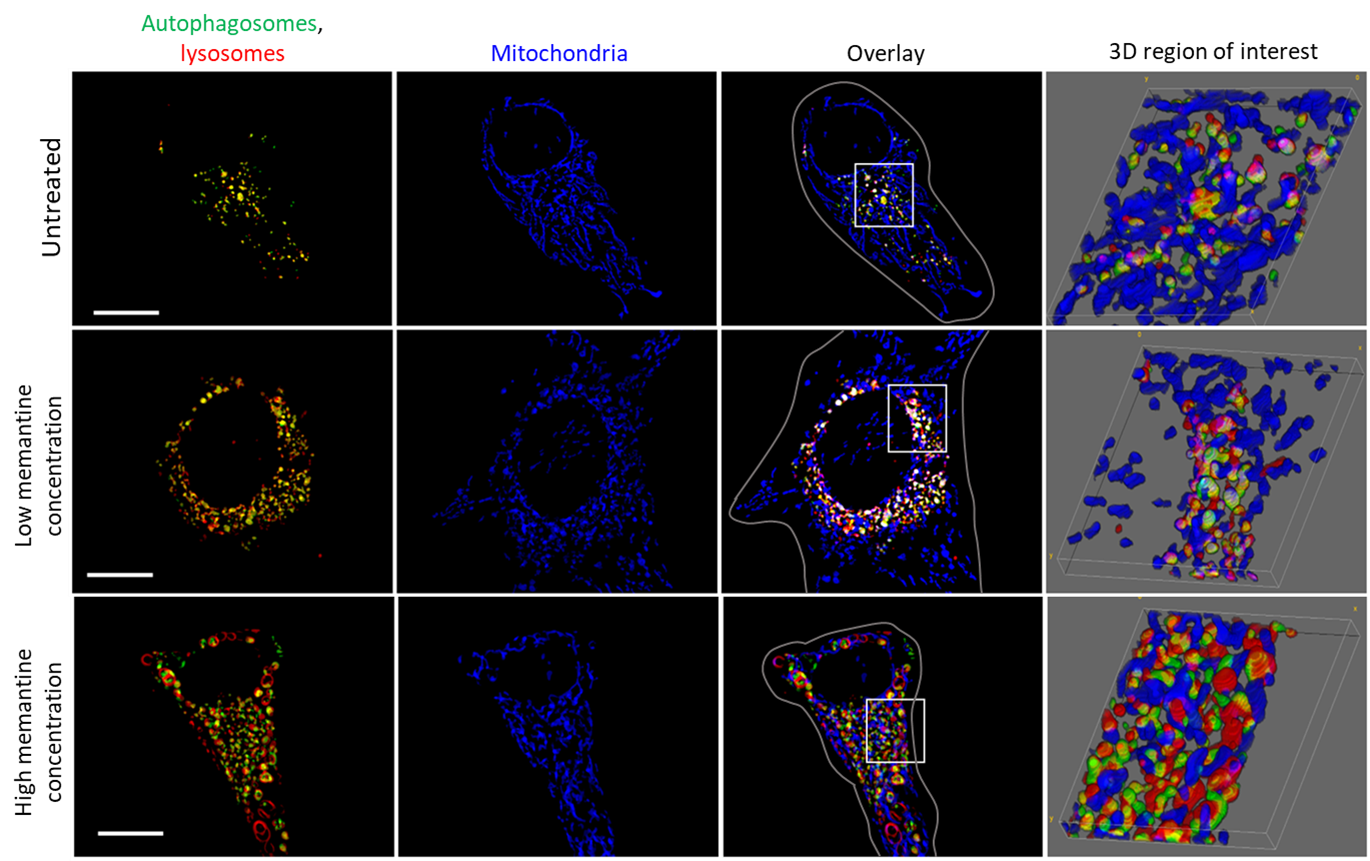Memantine is one of the main drugs prescribed for patients with mild to severe Alzheimer's disease. Yet, despite an 8.5% increase worldwide in the use of the drug between 2008 and 2018, uncertainties remain regarding the most favorable treatment concentrations.
To address this question, scientists in the Department of Physiological Sciences at Stellenbosch University (SU) investigated the concentration-dependent effect of memantine in a neuronal cell model. Intriguingly, they found that low (and not high) concentrations of memantine led to the induction of mitophagy – that is, the selective degradation of mitochondria within the cell; a process that has been shown to enhance cell survival and longevity through the removal of dysfunctional mitochondria.
In Alzheimer's and Parkinson's diseases, dysfunctional mitochondria are an early hallmark of the disease.
Dr Sholto de Wet, main author of the paper published in the journal Cell, says they found that memantine increases the rate at which dysfunctional mitochondria are degraded: “This ensures the presence of new and properly functioning mitochondria that then contribute towards the cell's energetic state. However, when higher concentrations were used, it was noted that autophagy, a pathway responsible for the degradation of proteins, was increased," he explains.
Further research is now needed to translate these findings into more complex model systems, including the brain.
What drives neurodegenerative diseases on a cellular level?
The latest work was done against the background of ongoing research in Prof Ben Loos' research group in SU's Department of Physiological Sciences on the role of cell death in driving neurodegenerative diseases such as Alzheimer's, Parkinsons' and Huntington's disease.
“We are now starting to understand that there is an interdependent relationship between three important processes in the cell, which can be compared to our digestive system," De Wet explains.
For example, the rate at which proteins are degraded through autophagy can be compared to the mouth, taking in the damaged parts of the cell. The second process (called lysosomal acidification) is akin to the stomach, where acids aid in digesting those parts. Lastly, the mitochondrial network function provides energy to the cell to function properly, enabling lysosomes to acidify and thereby ensuring that the food can be digested in the first place, he explains.
Previously, these processes were studied separately or only as one related to another, rather than considering all three interdependently. This new way of thinking allows them to understand much better the molecular defect that drives these diseases.
Moreover, thus far scientists have mostly focused on the insoluble aggregates of misfolded proteins, deposited in regions of the brain that correspond with the symptoms of the disease at later stages. According to de Wet, how these proteins are degraded inside the cell as well as the role of mitochondria during this process is gaining increasingly interest.
De Wet and Loos now argue that these aggregates are not the root cause of neurotoxicity per se, but rather that they arise due to the disfunction of the protein degradation pathway, i.e., autophagy.
In another article, they show that the moment the interdependent relationship between those three processes is disrupted, the system will be thrown out of balance and the problematic proteins won't be degraded. In the case of neurodegenerative diseases, the proteins will continue to be over-produced and interact with different parts of the cell, including the mitochondria, effectively leading to the cell dying if their levels aren't kept low.
This means that targeting any three sides of this triangle, for example by enhancing mitophagy, will lead to protecting the cell: “This is relevant, as many problematic proteins associated with neurodegenerative diseases have been shown to damage the cell by interrupting mitochondrial activity. Memantine may therefore offer an avenue by which the mitochondria that are being interfered with, can be removed from the system, possibly along with the problematic proteins," de Wet explains.
According to Loos, this action of the drug memantine had not been described previously: “Our research points to an important mechanism, which, if exploited in a well-targeted manner, may contribute to a new way of thinking and approaching the treatment of Alzheimer's disease."

In the image above, the effect of the two different concentrations of memantine within the cells are shown. The cells treated with low concentrations of memantine (50 uM) had more events occurring (more pink and white dots), whereas with higher concentrations (100 uM) it did not happen to the same degree. Image: Sholto de Wet
The article titled “The highs and lows of memantine – an autophagy and mitophagy inducing agent that protects mitochondria" was recently published in Cell.
On the photos above, Dr Sholto de Wet and Prof. Ben Loos. Images: Wiida Fourie-Basson and Stefan Els

